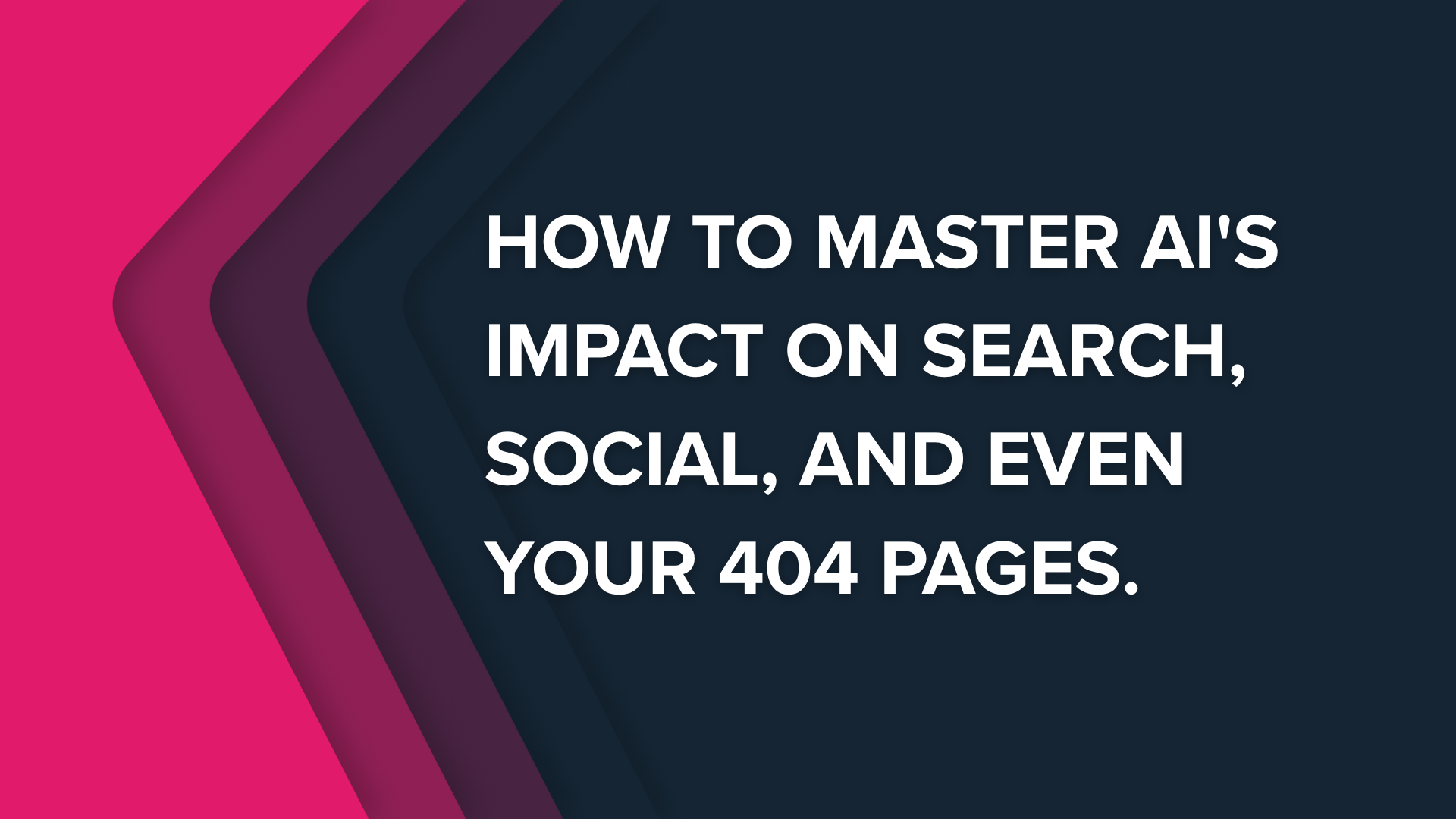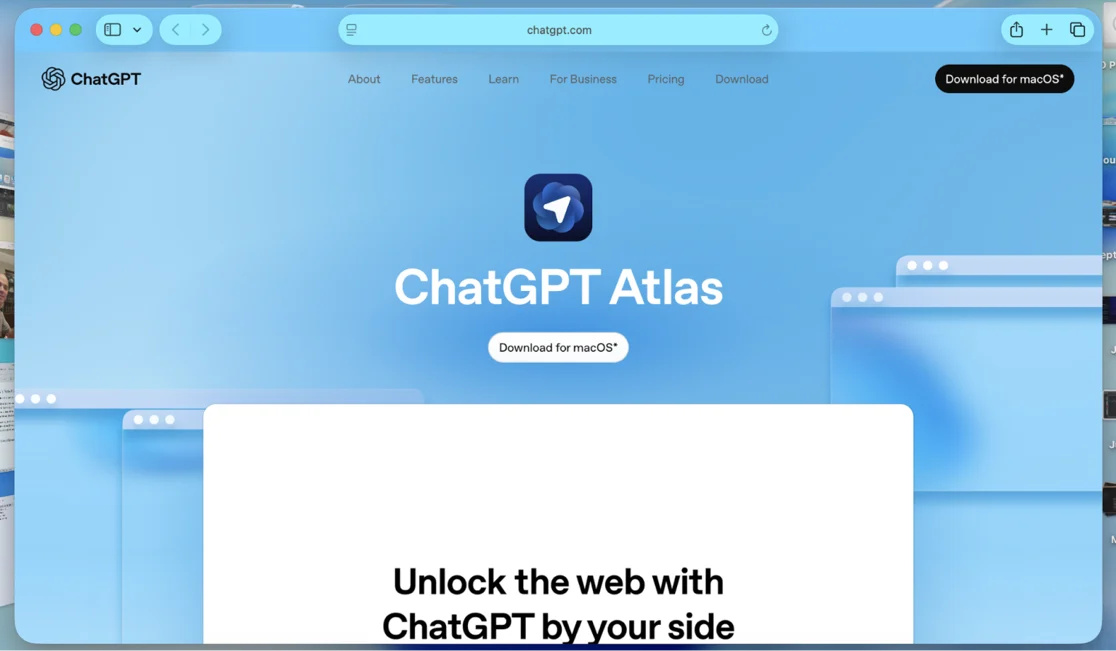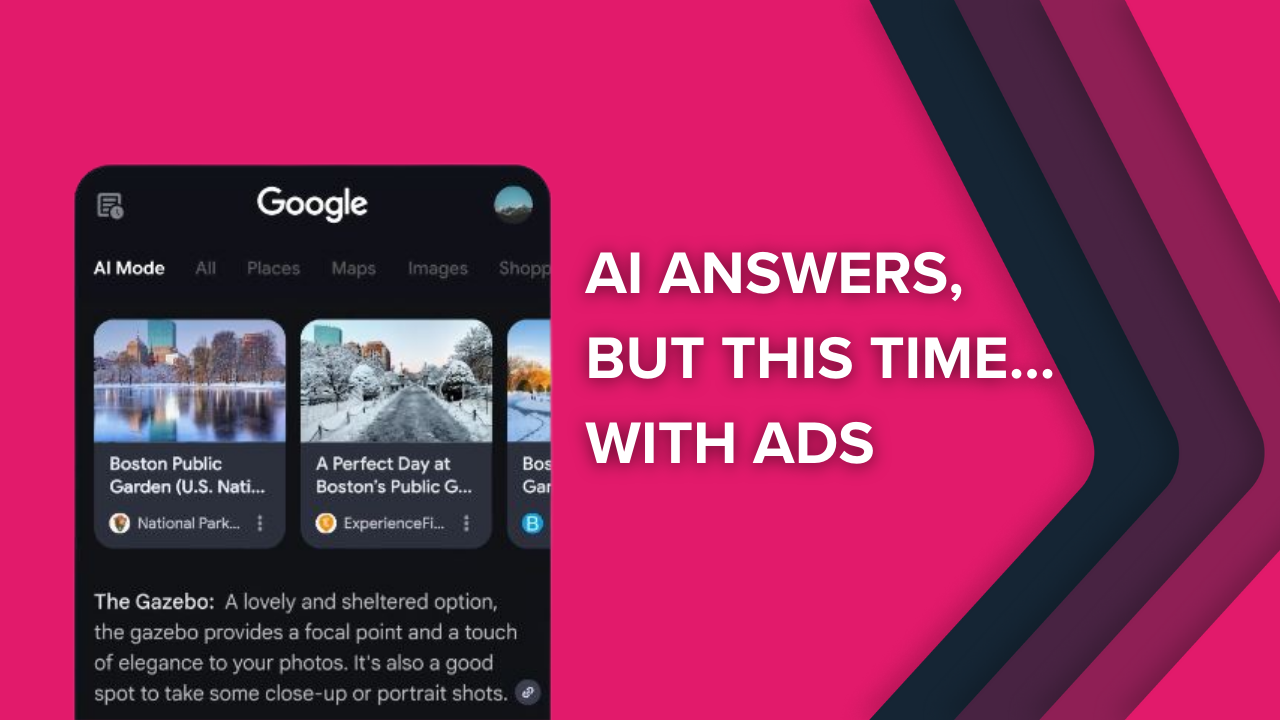The pace of change in travel marketing isn't just fast—it's accelerating. It's enough to make your head spin, but it's also the most exciting time to be in our industry.
In today's NavLog:
- GenAI's Impact on Travel Marketing - Webinar
- Is AI the Intermediary Killer?
- The "Googlification" of Instagram: A New Playbook for Travel Brands
- Why ChatGPT Keeps Getting Lost on Your 404 Pages
- What the Propellic Team is Thinking About
Phocuswright - The New Age(nts) Trend Series

AI is transforming how travelers discover and plan. In this essential webinar from Phocuswright, hear from a panel of experts—including Brennen Bliss of Propellic—on the strategies your travel company needs to succeed.
Learn to navigate Google's AI Overviews, ChatGPT, and the new rules of visibility.
OTAs Won't Die – But They Better Wake Up

By: Brennen Bliss, CEO @ Propellic
Will AI kill OTAs and metasearch platforms? That’s a common topic of discussion.
My answer? Not exactly. But if you're running an OTA or metasearch site and you think you can coast on your current business model, I’d reckon you're in for a rude awakening.
The Writing's On The Wall
Let's start with what's actually happening right now. Google is testing AI-generated travel answers that keep users on their platform instead of sending them to your site - from search to booking (with Project Mariner).
Meanwhile, airlines and hotels are building their own AI booking tools to cut out the middleman entirely – supposedly.
Why I don’t Buy the “Death of OTAs” Narrative
The doom-and-gloom predictions about AI destroying OTAs miss a critical point:
The infrastructure advantage is massive. You can't just snap your fingers and create real-time connections to millions of hotel rooms and flight seats.
OTAs spent decades building these integrations, payment systems, and fraud detection.
Despite what some might assume, AI models aren't magically scraping real-time prices from tens-of-thousands of operator (hotel, tour, etc.) websites at once. While large-scale price monitoring is possible, it requires a complex, expensive infrastructure — including proxies, anti-bot workarounds, and often direct API access.
Most real-time price aggregation today doesn't rely on scraping, but rather on pre-negotiated data partnerships or delayed caching. The dream of universal, real-time price visibility across the web still runs into big technical, legal, and logistical walls.
Personal AI, Not OTA AI
I have a strong opinion about this. I don’t believe travelers will use AI chatbots built by OTAs. Why would you use Expedia's AI when you could use ChatGPT or Google's Gemini – systems that already know your preferences, your calendar, your email, and your entire digital life?
Think about it. Your personal AI knows you hate middle seats, prefer hotels with gyms, and always travel in March for your anniversary. Expedia's AI knows... that you've booked hotels before. The personalization isn't even close.
I would bet that the future traveler will ask their personal AI assistant – probably Google or OpenAI – to plan their trip. I already do that, today. The personal AI will know them better than any OTA ever could, and it won't be trying to upsell them on travel insurance.
The OTA Defense Strategy
But here's where OTAs have a nuclear option: data access control.
If OTAs start seeing AI models scraping their pricing data and then facilitating direct bookings with hotels, they'll simply cut off access. No more APIs for AI agents. No more pricing data. No more inventory.
This isn't theoretical – it's business survival 101. OTAs make money on commissions. If an AI uses their data to help customers book direct and avoid those commissions, the OTA will protect itself faster than you can say "terms of service violation."
This creates an interesting standoff. Personal AI assistants will need inventory access, but OTAs control much of that access. The result? OTAs might become the backend infrastructure that powers AI booking, even if consumers never see their brand.
What This Means For Travel Marketers
If you're spending millions on Google Ads to drive traffic to your booking site, start planning for a world where that traffic gets intercepted by AI before it ever reaches you.
The customer acquisition game is changing fundamentally. Instead of competing for clicks, you'll be competing for API partnerships with AI platforms. Instead of optimizing landing pages, you'll be negotiating with AI companies for inventory access.
This could actually create new moats. The companies that can provide the most comprehensive, real-time inventory to AI platforms will win. Those with exclusive deals or hard-to-replicate data feeds will have leverage.
The Power Struggle Is Just Beginning
OTAs won't disappear, but they're about to enter the biggest power struggle in travel's digital history.
On one side: AI platforms that want comprehensive travel data to serve their users. On the other side: OTAs control much of that data and won't give it away for free.
The winners will be the companies that figure out how to monetize this new value chain. Maybe that's OTAs evolving into AI-backend providers. Maybe it's AI platforms paying for premium inventory access. Maybe it's entirely new business models we haven't thought of yet.
What I'm fairly confident of: the cozy relationship between Google Ads and OTA customer acquisition is about to get blown up. The question isn't whether intermediaries will survive – it's which ones will control the data pipelines that power AI-driven booking.
Those that get this right will own the next era of travel. Those that don't will find themselves cut out of the conversation entirely.
The "Googlification" of Instagram: A New Playbook for Travel Brands
.png)
By: Dasha Gastol, Senior Director of Paid Media @ Propellic
Instagram has long served as a top-of-funnel discovery engine, fueling wanderlust through visually rich, algorithmically surfaced content. But traditionally, it has operated as a pull mechanism, with users passively consuming travel inspiration rather than actively searching with intent.
That’s starting to shift, now that Professional account content on Instagram is accessible in traditional search algorithms - and thereby, conversational AI, as well.
With post indelibility—where content remains searchable and resurfaced well beyond its original publish date—marketers can now treat Instagram posts more like evergreen assets designed to attract high-intent travelers.
In this way, Instagram is beginning to function more like Google: a platform where content is optimized for discoverability and conversion, not just engagement.
For travel brands, this opens new opportunities to bridge the gap between inspiration and action.
To take advantage of this shift, brands should start treating social content with the same strategic rigor as search. That means optimizing captions and hashtags for intent, designing assets for long-term visibility, and mapping content to specific stages of the customer journey.
Why ChatGPT Keeps Getting Lost on Your 404 Pages

By: Brennen Bliss, CEO @ Propellic
A client recently discovered something that made me laugh: ChatGPT keeps sharing links from their website that lead to 404 error pages.
Their first thought? "Is ChatGPT making up links, or did we accidentally feed it broken URLs?"
The answer is: yes. To both.
The Wild West of AI Crawling
Here's a fun fact that'll make your day: about 30% of the links that AI bots crawl end up being 404s. Why? Because these supposedly "intelligent" systems are actually using pretty unsophisticated crawlers that make basic mistakes like following old redirects, clicking on broken internal links, and generally wandering around your website like a lost tourist.
But that's not even the best part. LLMs also just... make up links.
If you see ChatGPT confidently provide an answer without showing that it performed a search, there's a decent chance it's hallucinating that perfect URL that would support its point.
The Technical Reality Check
So what can you actually do about this digital comedy of errors?
Monitor your server logs. Create a filter for known AI crawler traffic and sort by 404 hits. If you find specific broken pages getting hammered by bots, either set up proper 301 redirects or create content for those pages. Sometimes the robots know what they want better than we do.
Check your GA4 traffic. Filter your landing pages report by 404 page titles (usually something like "Page not Found") and look for referral traffic from AI platforms. Same solution: fix the redirects or build the content.
Ideally, run regular crawls to find what's sending these AI bots down the wrong path. But honestly? The juice might not be worth the squeeze on crawling costs, especially for large domains.
The Bigger Picture
This isn't just a technical annoyance – it's a preview of what's coming. As AI systems become the primary way people discover content, your website's relationship with AI crawlers becomes as important as your relationship with Google's spider.
The companies that get ahead of this now will be the ones that show up in AI answers later. Those that ignore it will be stuck explaining why their "comprehensive travel guide" doesn't actually exist when ChatGPT recommends it.
At least when humans click on broken links, they usually don't confidently share them with millions of other people.


By: Zack Skinner, Sr. Paid Media Manager @ Propellic
AI MAX (read the previous NavLog here for more) is now a mandatory opt-in for advertisers wanting to use brand inclusions, brand exclusions, final landing page expansion and text customization.
Legacy campaigns aren’t requiring AI MAX, but updating settings will trigger the new requirement.
Pinterest continues to succumb to AI generated content, making the platform less and less user-friendly.
True organic content is gettin harder to find. Pinterest doesn't seem to be putting a stop to AI slop. Good luck with your photo-inspired travel (or wedding) planning!
Meta is going all in with their AI push as Mark Zuckerberg continues to poach top talent from the competition with multimillion dollar salary packages and heavy investing in new tools with the goal of being the top player in the space.
Meta is testing AI creative at scale with certain advertisers.
By: Brennen Bliss, CEO @ Propellic
Google has a new user agent that’s been crawling the web that appears to be its new browser-use project, “Mariner.” Amazon has already blocked it from crawling Amazon.com (or at least has respectfully asked it not to with Amazon’s robots.txt file).

Head of Marketing - Remote Global or Austin, TX
Full-Charge Bookkeeper - Remote US or Austin, TX
Head of AI Video - Remote Global or Austin, TX
Account Executive - Remote North America or Austin, TX
Full-stack Web Developer - Remote Global
Senior Paid Media Strategist, Innovation & AI - Remote North America or Austin, TX
Head of AI Visibility Optimization / GEO - Remote Global or Austin, TX


Want To Level Up Your Travel Marketing?
Subscribe to the NavLog, our bi-weekly travel marketing roundup, where you’ll be the first to know about breaking news that impacts travel marketers and access exclusive performance marketing strategies and practical tips you can implement from the marketers at the leading edge of the travel industry.





.png)
